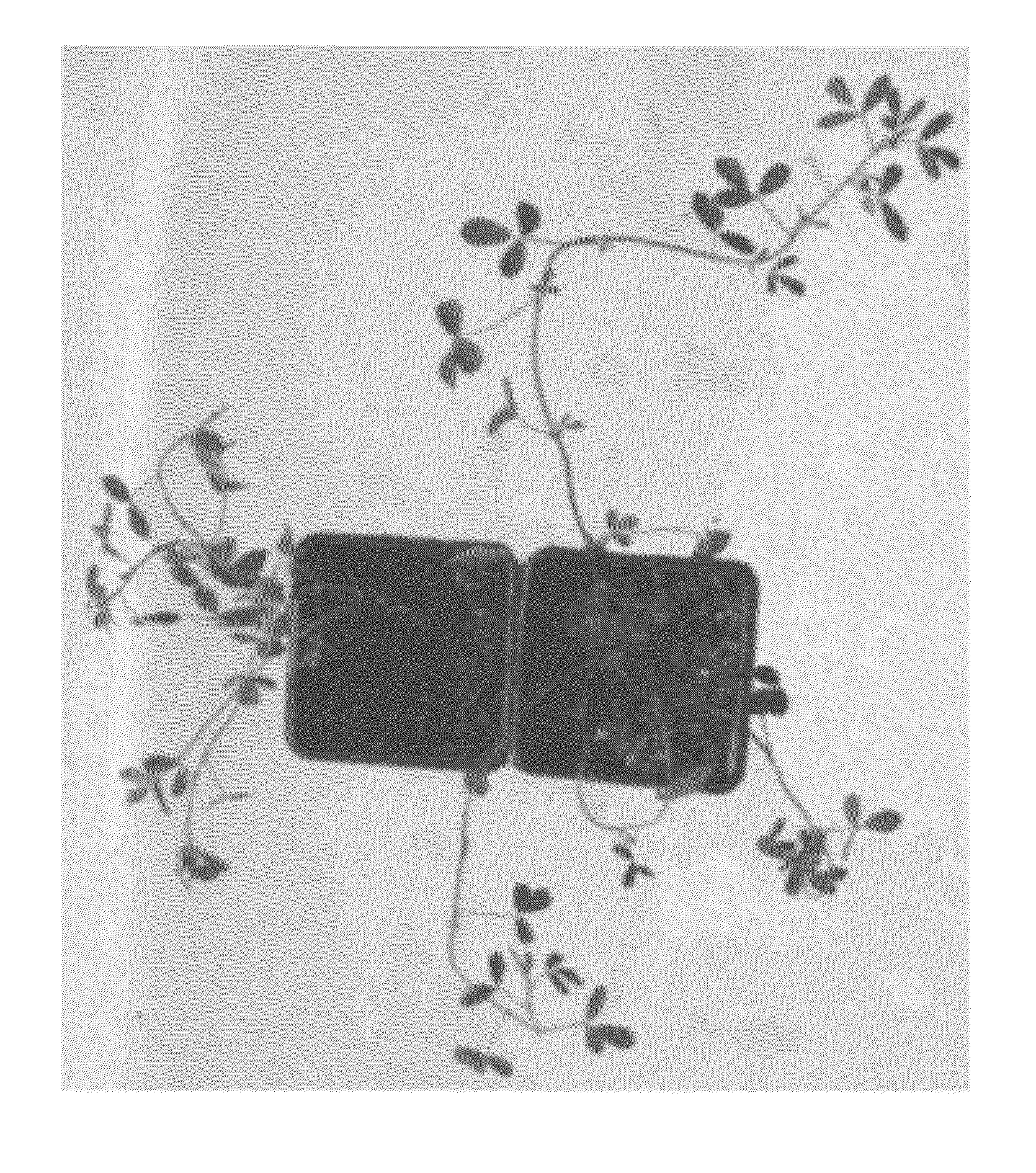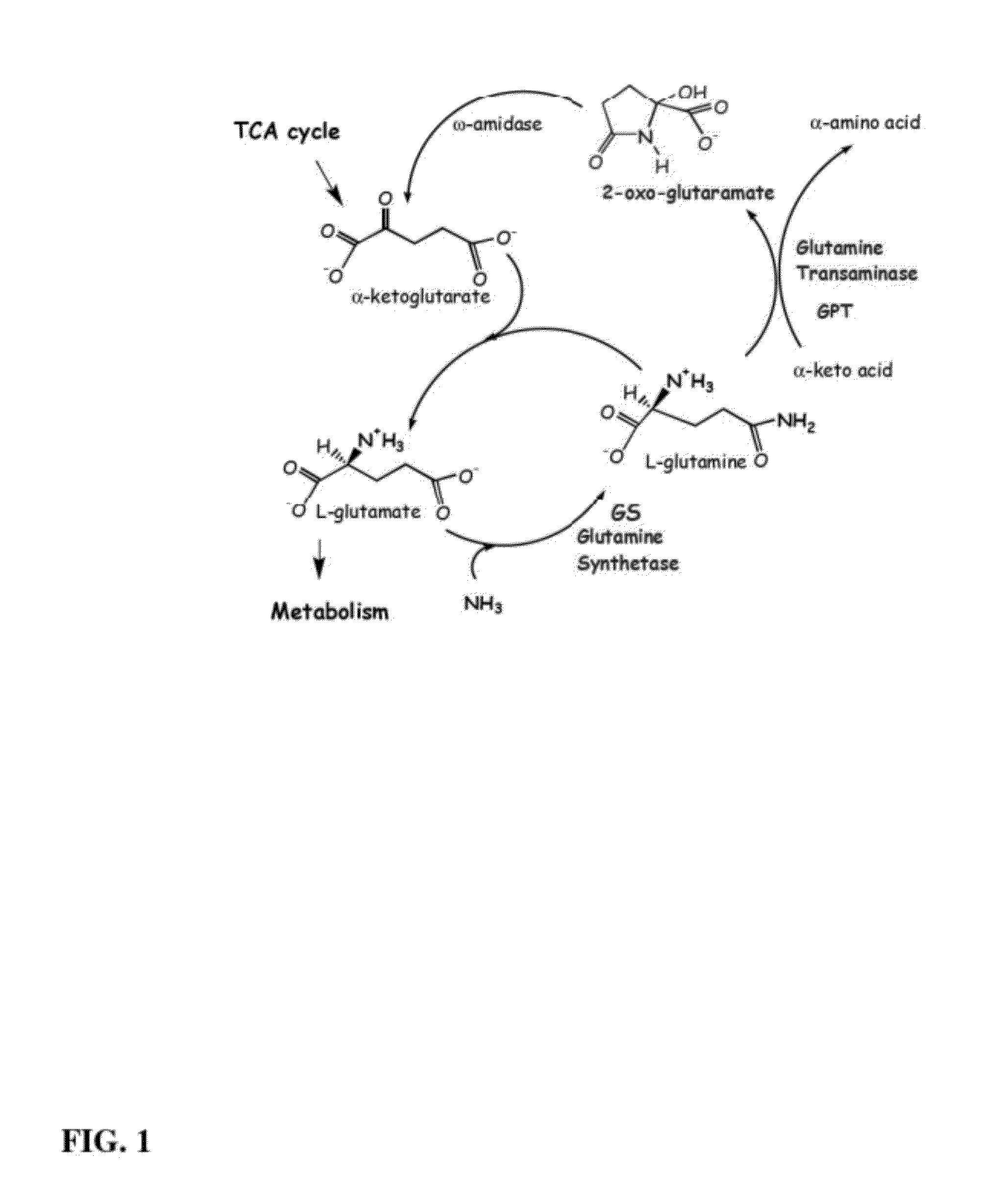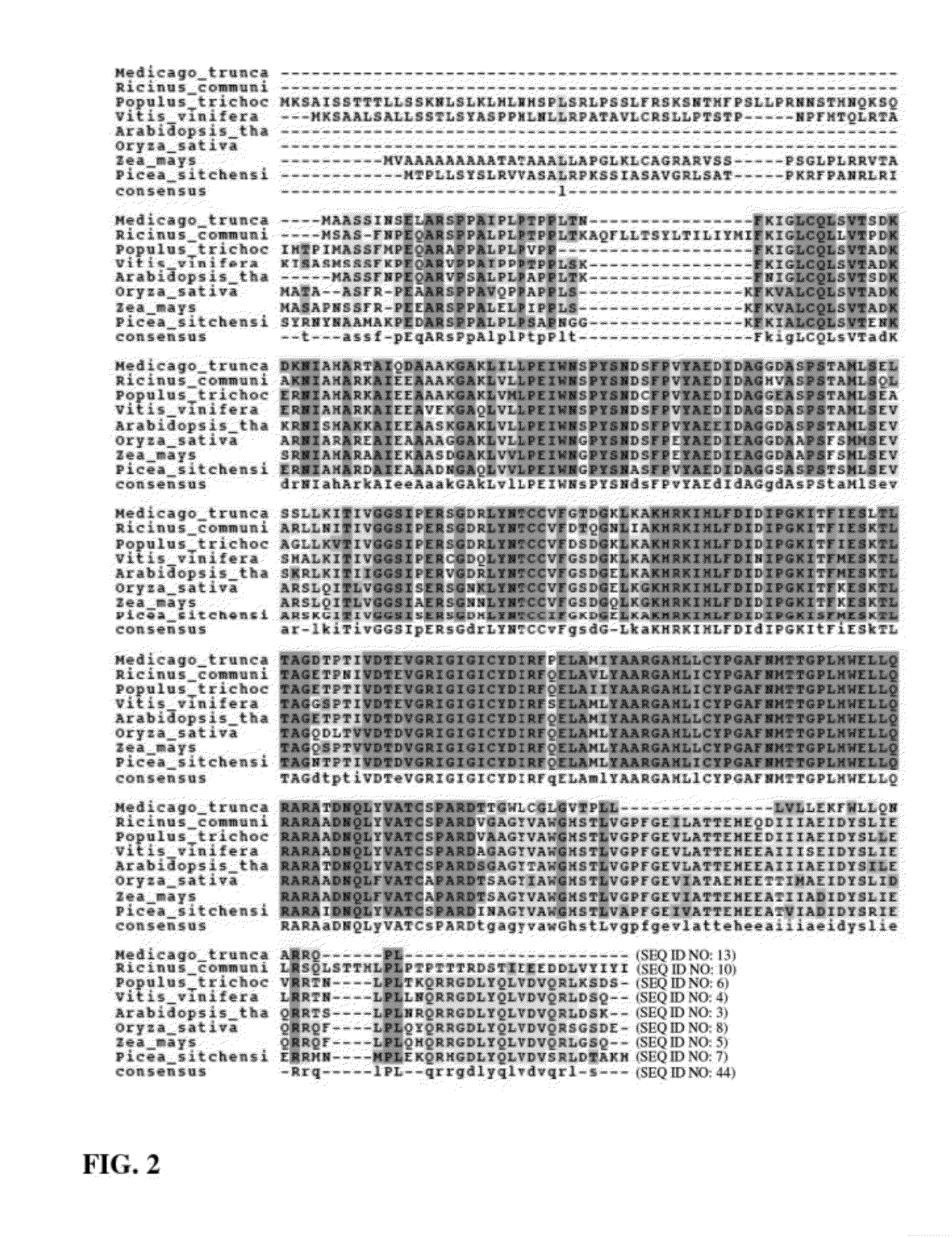Increasing plant growth by modulating omega-amidase expression in plants
a technology of plant growth and omega-amidase, which is applied in the field of increasing plant growth by modulating omega-amidase expression in plants, can solve the problems of reducing -amidase expression in leaf tissue, and achieve the effects of increasing the nitrogen use efficiency of plants, increasing leaf-to-root ratio, and increasing leaf-to-root ratio
- Summary
- Abstract
- Description
- Claims
- Application Information
AI Technical Summary
Benefits of technology
Problems solved by technology
Method used
Image
Examples
example 1
Effects of Increasing Expression Levels of GS and GPT on Ω-Amidase Pathway
Materials and Methods:
[0156]Generation of Transgenic Plants: Plants were genetically engineered to over-produce 2-oxoglutaramate by over expressing GS and GPT transgenes, as described in U.S. patent application Ser. No. 12 / 551,271. The resulting phenotypic effects were evaluated. Three sets of transgenic tobacco lines were generated: one set over-expressing GPT to increase GRMT catalytic capacity; a second set over-expressing GS to increase, in the leaves only, the catalytic capacity to make the glutamine substrate of GPT; and a third set over expressing GS and GPT, produced by sexually crossing fast-growing progeny of the single transgene lines.
[0157]Growth of Engineered Tobacco and Arabidopsis: Wild type and engineered tobacco seeds were surface sterilized and germinated in phytotrays containing M&S medium. The medium for the engineered plants contained kanamycin (10 ug / ml). The vigorously growing seedlings ...
example 2
Plant Expression Vector Modulating Root Ω-Amidase Expression Levels
[0162]Ω-amidase expression levels are increased in root tissues by generating transgenic plants transformed with expression constructs containing an ω-amidase coding sequence, including but not limited to any of the ω-amidase coding sequences disclosed herein, under the control of a root-preferred promoter. It is believed that increased levels of ω-amidase in root tissues result in increased breakdown of the signal metabolite 2-oxoglutaramate.
[0163]A construct for transforming plants includes an expression cassette encoding a suitable root-preferred promoter, a sequence encoding a plant ω-amidase, and a terminator sequence. In this example, the expression cassette contains the glycine-rich protein (GRP) promoter (Goddemeier et al., 1998, Plant Mol. Biol. 36(5): 799-802), the Arabidopsis thaliana ω-amidase coding sequence, and the NOS terminator. The GRP promoter sequence is shown below [SEQ ID NO: 16]:
GAAATTAAACCCAGG...
example 3
Increased Growth of Transgenic Alfalfa Plants Carrying Root-Preferred Ω-Amidase Transgene
[0168]In this example, alfalfa plant growth was increased by introducing an ω-amidase transgene under the control of a highly root-preferred promoter. The resulting transgenic alfalfa plants showed decreased 2-oxoglutaramate concentration in roots, increased leaf-to-root ratio of 2-oxoglutaramate, and enhanced growth relative to wild type alfalfa plants. Alfalfa plants (Medicago sativa, var Ladak) were transformed with the Arabidopsis ω-amidase coding sequence truncated to remove the chloroplast transit peptide, under the control of a truncated Agrobacterium rhizogenes RolD promoter within the expression vector pTF101.1.
Materials and Methods:
[0169]Agrobacterium Vectors: The expression vector pTF101.1 was engineered to carry the ω-amidase transgene expression cassette of SEQ ID NO: 39 (RolD promoter+ω-amidase+NOS terminator) and was transferred to Agrobacterium tumefaciens strain LBA4404 cultures...
PUM
| Property | Measurement | Unit |
|---|---|---|
| Fraction | aaaaa | aaaaa |
| Electrical conductance | aaaaa | aaaaa |
| Mass | aaaaa | aaaaa |
Abstract
Description
Claims
Application Information
 Login to View More
Login to View More - R&D
- Intellectual Property
- Life Sciences
- Materials
- Tech Scout
- Unparalleled Data Quality
- Higher Quality Content
- 60% Fewer Hallucinations
Browse by: Latest US Patents, China's latest patents, Technical Efficacy Thesaurus, Application Domain, Technology Topic, Popular Technical Reports.
© 2025 PatSnap. All rights reserved.Legal|Privacy policy|Modern Slavery Act Transparency Statement|Sitemap|About US| Contact US: help@patsnap.com



